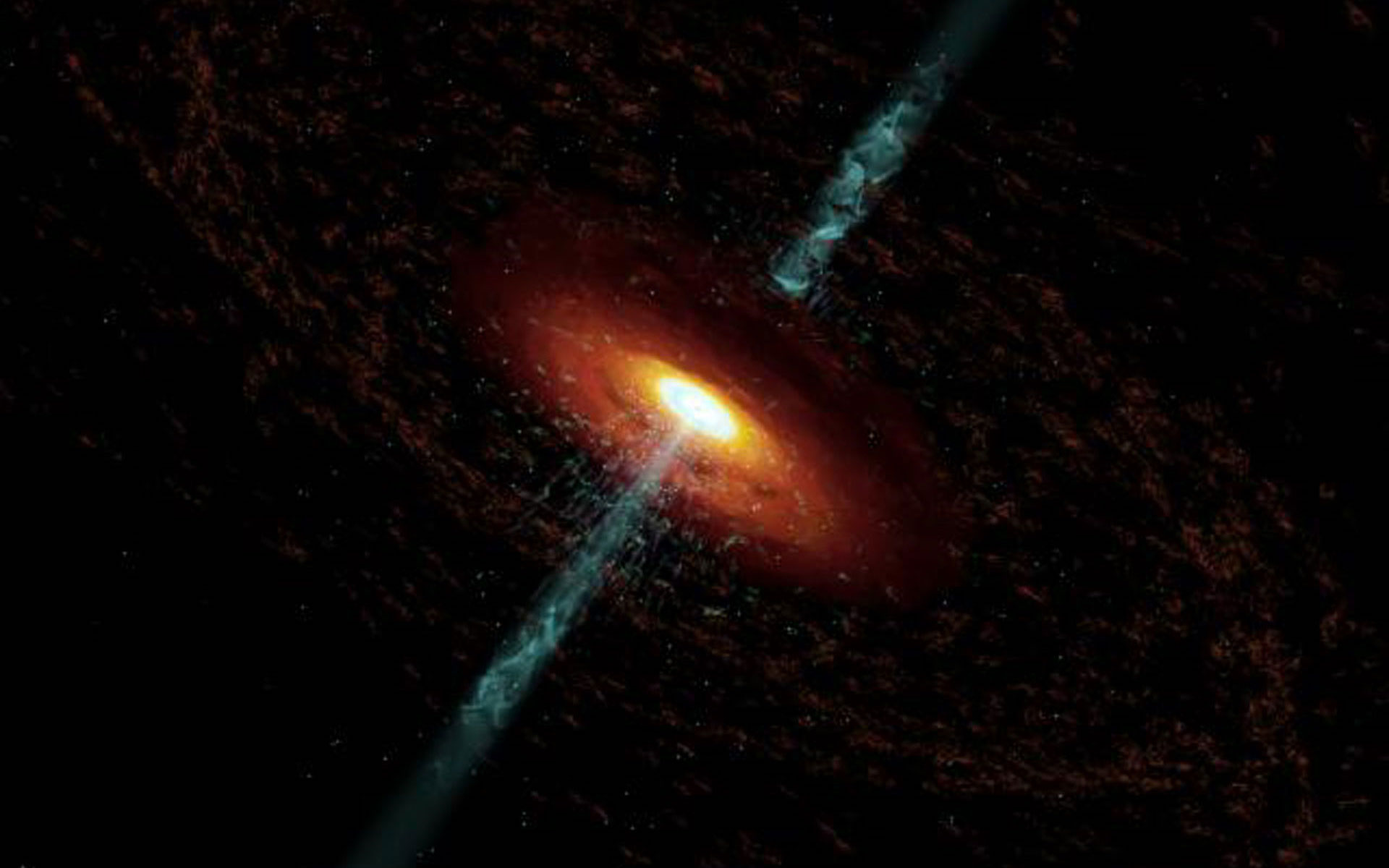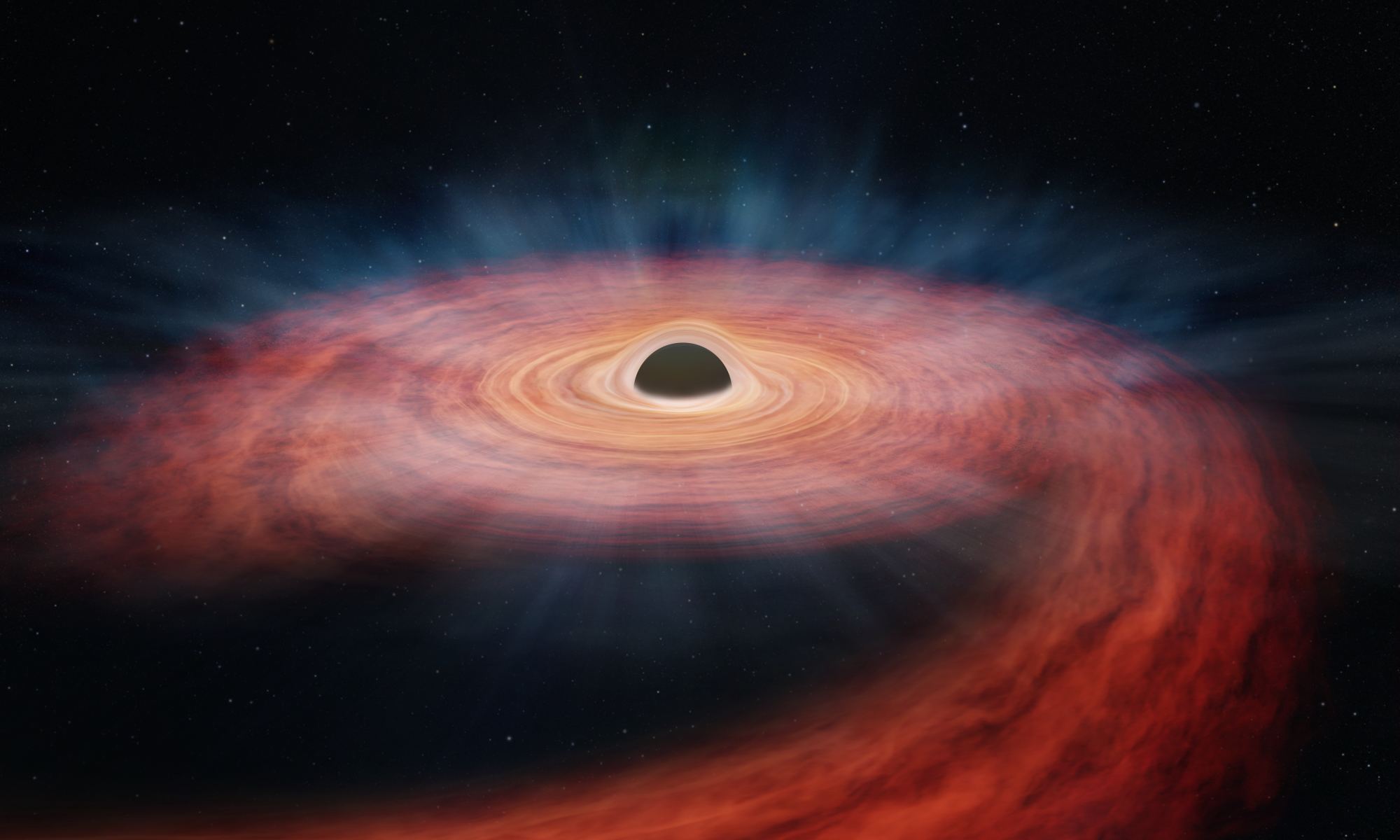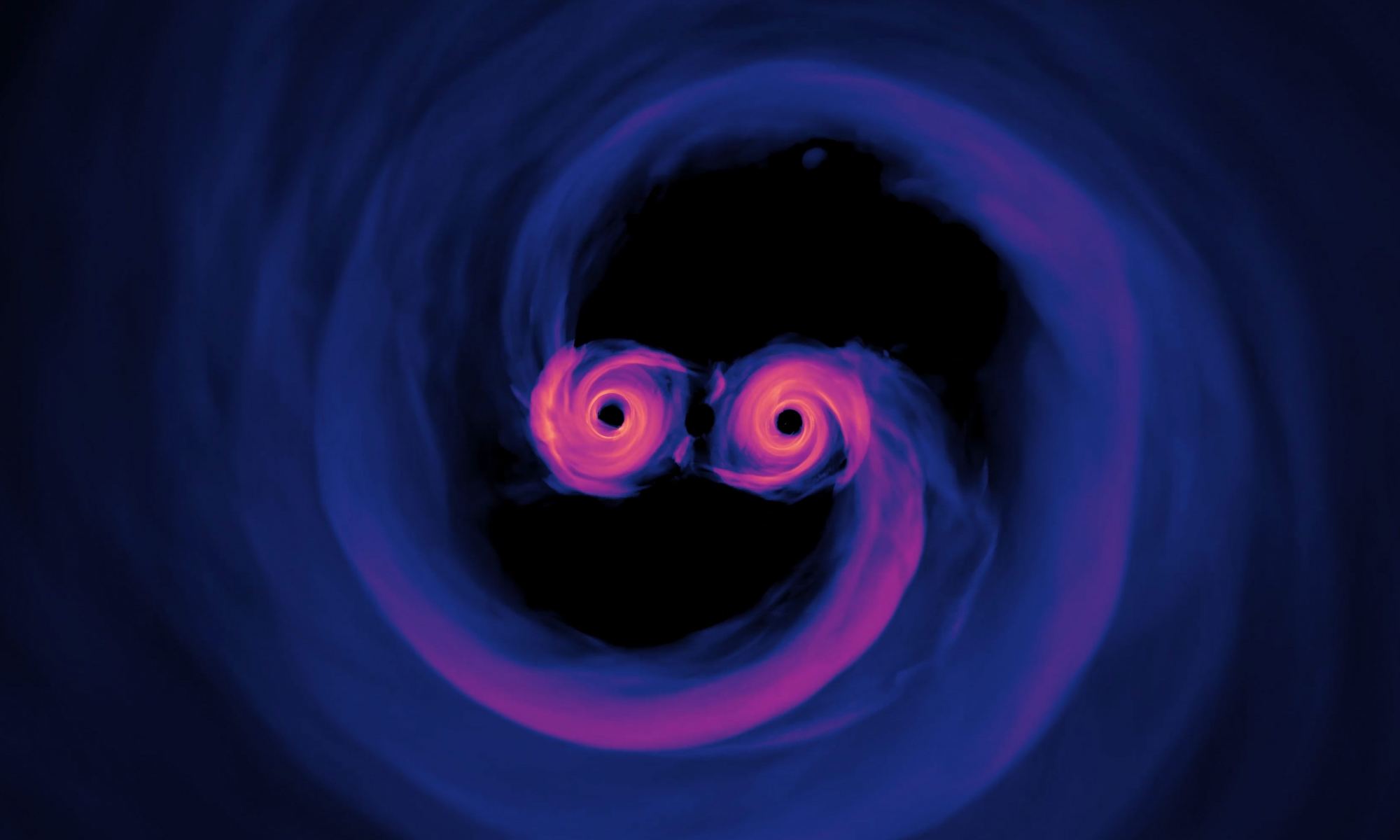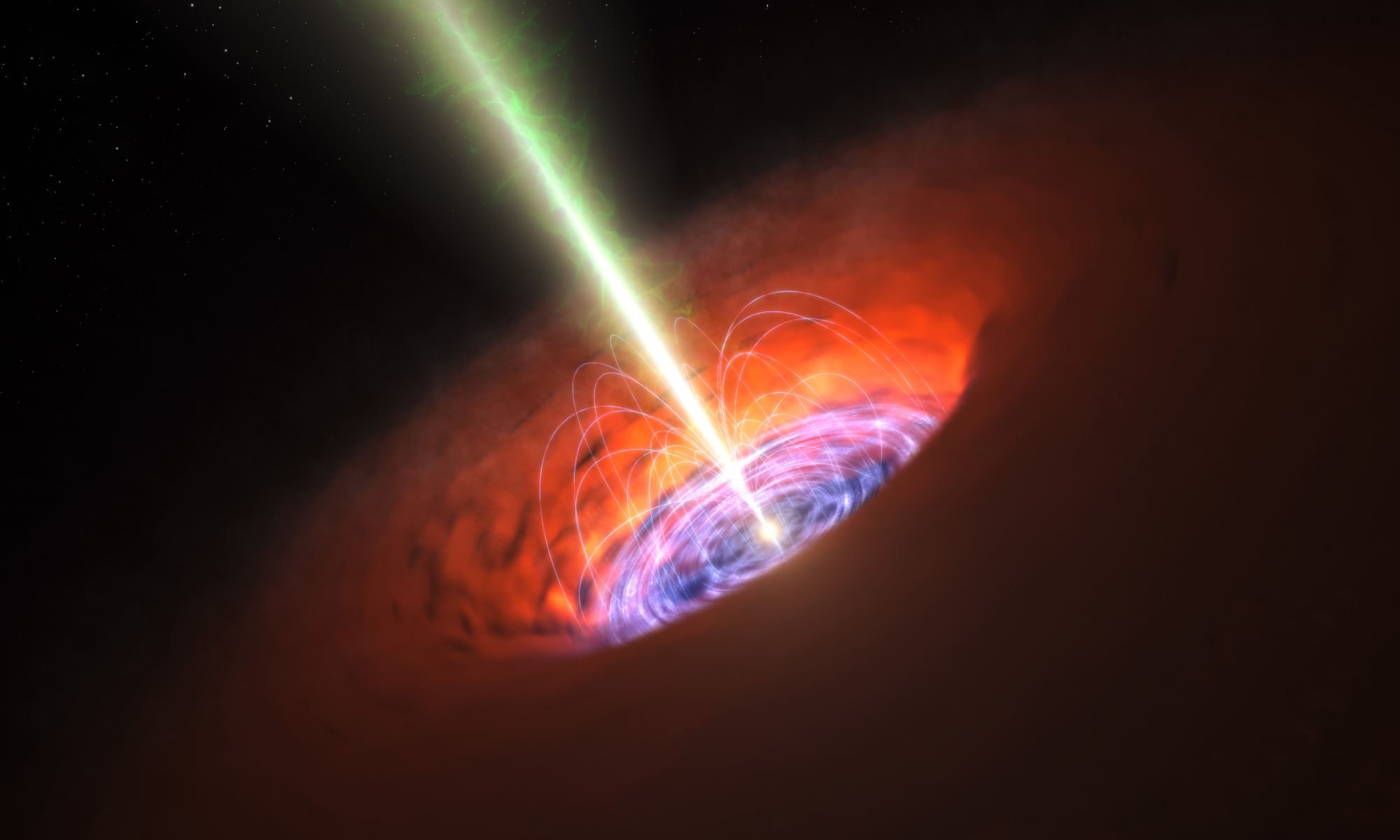For decades the most distant objects we could see were quasars. We now know they are powerful active black holes. Active galactic nuclei so distant that they resemble star-like points of light. It tells us that supermassive black holes in the early Universe can be powerful monsters that drive the evolution of their galaxies. We had thought most early supermassive black holes went through such an active phase, but a new study suggests most supermassive black holes don’t.
Continue reading “The Early Universe Should Be Awash in Active Galaxies, but JWST Isn't Finding Them”A Giant Black Hole Destroyed a Star and Threw the Pieces Into Space
When a black hole consumes a star, things can get quite messy. Take, for example, the event known as ASASSN-14li, where a massive star strayed too close to a supermassive black hole and paid the ultimate price.
Continue reading “A Giant Black Hole Destroyed a Star and Threw the Pieces Into Space”Gravitational Waves Can Be Gravitationally Lensed, and This Could Provide Another Way to Measure the Expansion of the Universe
Gravitational waves don’t travel through space and time. They are ripples in the fabric of spacetime itself. This is why they are so difficult to detect. We can only observe them by closely watching how objects bent and stretched within spacetime. But despite their oddness, gravitational waves behave in many of the same ways as light, and astronomers can use that fact to study cosmic expansion.
Continue reading “Gravitational Waves Can Be Gravitationally Lensed, and This Could Provide Another Way to Measure the Expansion of the Universe”Gaze at a Nearby Actively Feeding Supermassive Black Hole
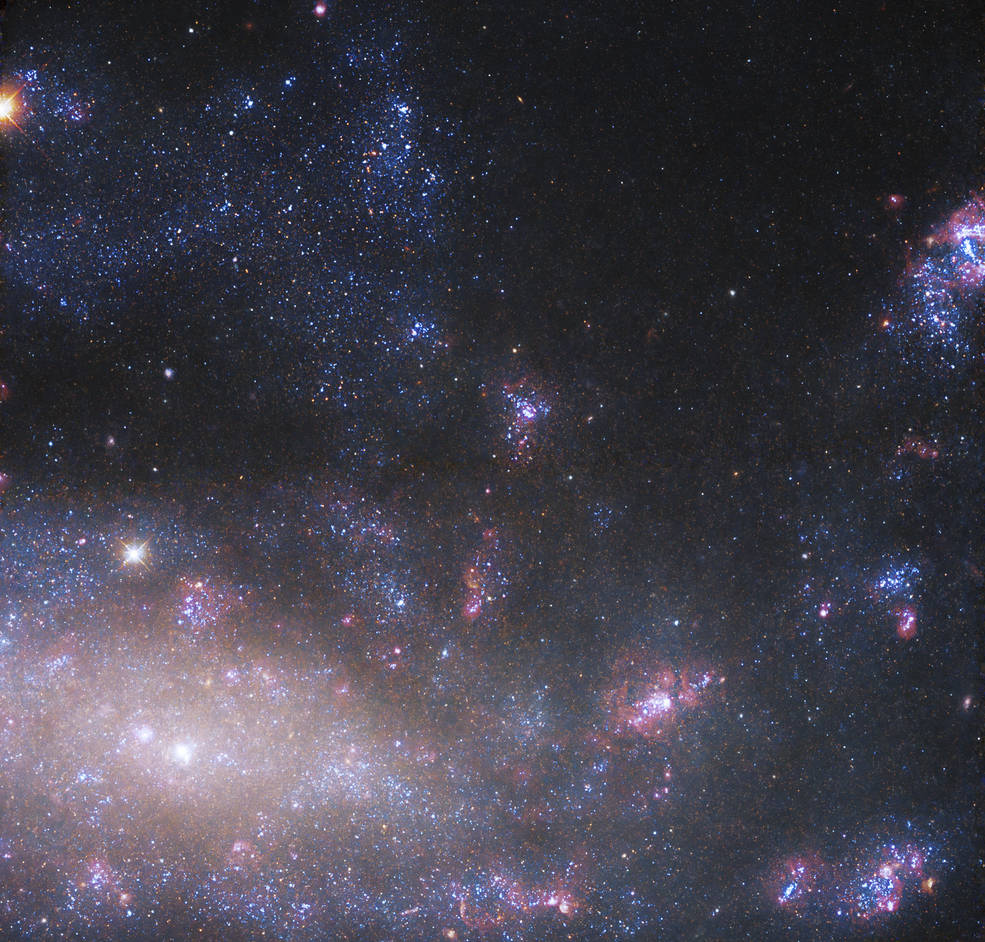
Astronomers recently shared a new image captured by the Hubble Space Telescope of the galaxy NGC 4395. This relatively diffuse and dim dwarf galaxy is located just 14 million light-years from Earth.
NGC 4395 has several oddities, and this new image zooms in on the galaxy’s central region to highlight just one of those quirks. NGC 4395 is different from other dwarf galaxies because it contains an actively feeding supermassive black hole at its center.
But this black hole is considered one of the lowest mass supermassive holes ever detected, an oxymoron if there ever was one.
Continue reading “Gaze at a Nearby Actively Feeding Supermassive Black Hole”Artificial Intelligence Produces a Sharper Image of M87’s Big Black Hole

Astronomers have used machine learning to sharpen up the Event Horizon Telescope’s first picture of a black hole — an exercise that demonstrates the value of artificial intelligence for fine-tuning cosmic observations.
The image should guide scientists as they test their hypotheses about the behavior of black holes, and about the gravitational rules of the road under extreme conditions.
Continue reading “Artificial Intelligence Produces a Sharper Image of M87’s Big Black Hole”A Mysterious Blob Near the Milky Way’s Supermassive Black Hole Might Finally Have an Explanation
At the center of the Milky Way, there is a massive persistent radio source known as Sagittarius A*. Since the 1970s, astronomers have known that this source is a supermassive black hole (SMBH) roughly 4 million times the mass of our Sun. Thanks to advancements in optics, spectrometers, and interferometry, astronomers have been able to peer into Galactic Center. In addition, thanks to the international consortium known as the Event Horizon Telescope (EHT), the world got to see the first image of Sagittarius A* (Sgr A*) in May 2022.
These efforts have allowed astronomers and astrophysicists to characterize the environment at the center of our galaxy and see how the laws of physics work under the most extreme conditions. For instance, scientists have been observing a mysterious elongated object around the Sgr A* (named X7) and wondered what it was. In a new study based on two decades’ worth of data, an international team of astronomers with the UCLA Galactic Center Group (GCG) and the Keck Observatory have proposed that it could be a debris cloud created by a stellar collision.
Continue reading “A Mysterious Blob Near the Milky Way’s Supermassive Black Hole Might Finally Have an Explanation”Are Black Holes the Source of Dark Energy?

By the 1920s, astronomers learned that the Universe was expanding as Einstein’s Theory of General Relativity predicted. This led to a debate among astrophysicists between those who believed the Universe began with a Big Bang and those who believed the Universe existed in a Steady State. By the 1960s, the first measurements of the Cosmic Microwave Background (CMB) indicated that the former was the most likely scenario. And by the 1990s, the Hubble Deep Fields provided the deepest images of the Universe ever taken, revealing galaxies as they appeared just a few hundred million years after the Big Bang.
Over time, these discoveries led to an astounding realization: the rate at which the Universe is expanding (aka. the Hubble Constant) has not been constant over time! This led to the theory of Dark Energy, an invisible force that counteracts gravity and causes this expansion to accelerate. In a series of papers, an international team of researchers led by the University of Hawaii reported that black holes in ancient and dormant galaxies were growing more than expected. This constitutes (they claim) the first evidence that black holes could be the source of Dark Energy.
Continue reading “Are Black Holes the Source of Dark Energy?”Do Advanced Civilizations use Black Holes as Giant Quantum Computers?
If life is common in our Universe, and we have every reason to suspect it is, why do we not see evidence of it everywhere? This is the essence of the Fermi Paradox, a question that has plagued astronomers and cosmologists almost since the birth of modern astronomy. It is also the reasoning behind the Hart-TIpler Conjecture, one of the many (many!) proposed resolutions, which asserts that if advanced life had emerged in our galaxy sometime in the past, we would see signs of their activity everywhere we looked. Possible indications include self-replicating probes, megastructures, and other Type III-like activity.
On the other hand, several proposed resolutions challenge the notion that advanced life would operate on such massive scales. Others suggest that advanced extraterrestrial civilizations would be engaged in activities and locales that would make them less noticeable. In a recent study, a German-Georgian team of researchers proposed that advanced extraterrestrial civilizations (ETCs) could use black holes as quantum computers. This makes sense from a computing standpoint and offers an explanation for the apparent lack of activity we see when we look at the cosmos.
Continue reading “Do Advanced Civilizations use Black Holes as Giant Quantum Computers?”A Black Hole is Savoring its Meal, Feeding on the Same Star Over and Over Again
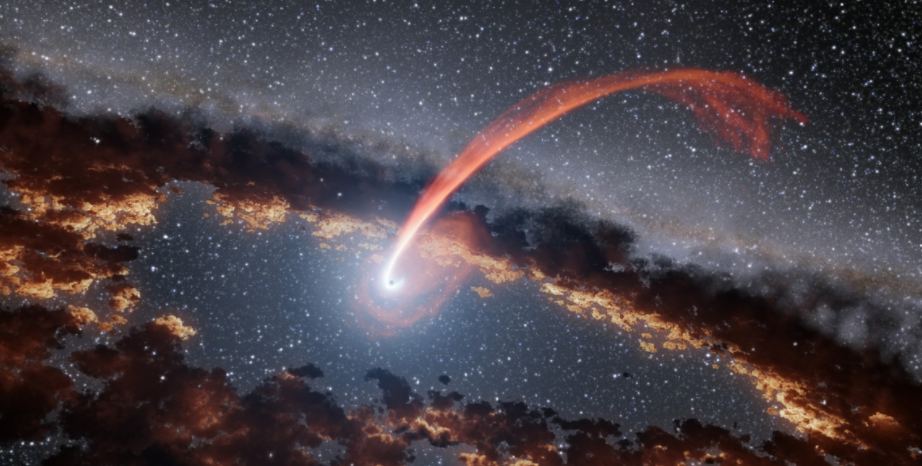
Something extraordinary happens about every 10,000 to 100,000 years in galaxies like the Milky Way. An unwary star approaches the supermassive black hole (SMBH) at the galaxy’s center and is torn apart by the SMBH’s overpowering gravity. Astronomers call the phenomenon a tidal disruption event (TDE.)
Usually, a TDE spells doom for the star as its gas is torn away into the black hole’s accretion ring, causing a bright flaring visible for hundreds of millions of light years. But researchers have found one black hole that’s playing with its food.
Continue reading “A Black Hole is Savoring its Meal, Feeding on the Same Star Over and Over Again”The JWST is the Shiny New Space Telescope, but the Dependable Hubble is Still Going Strong
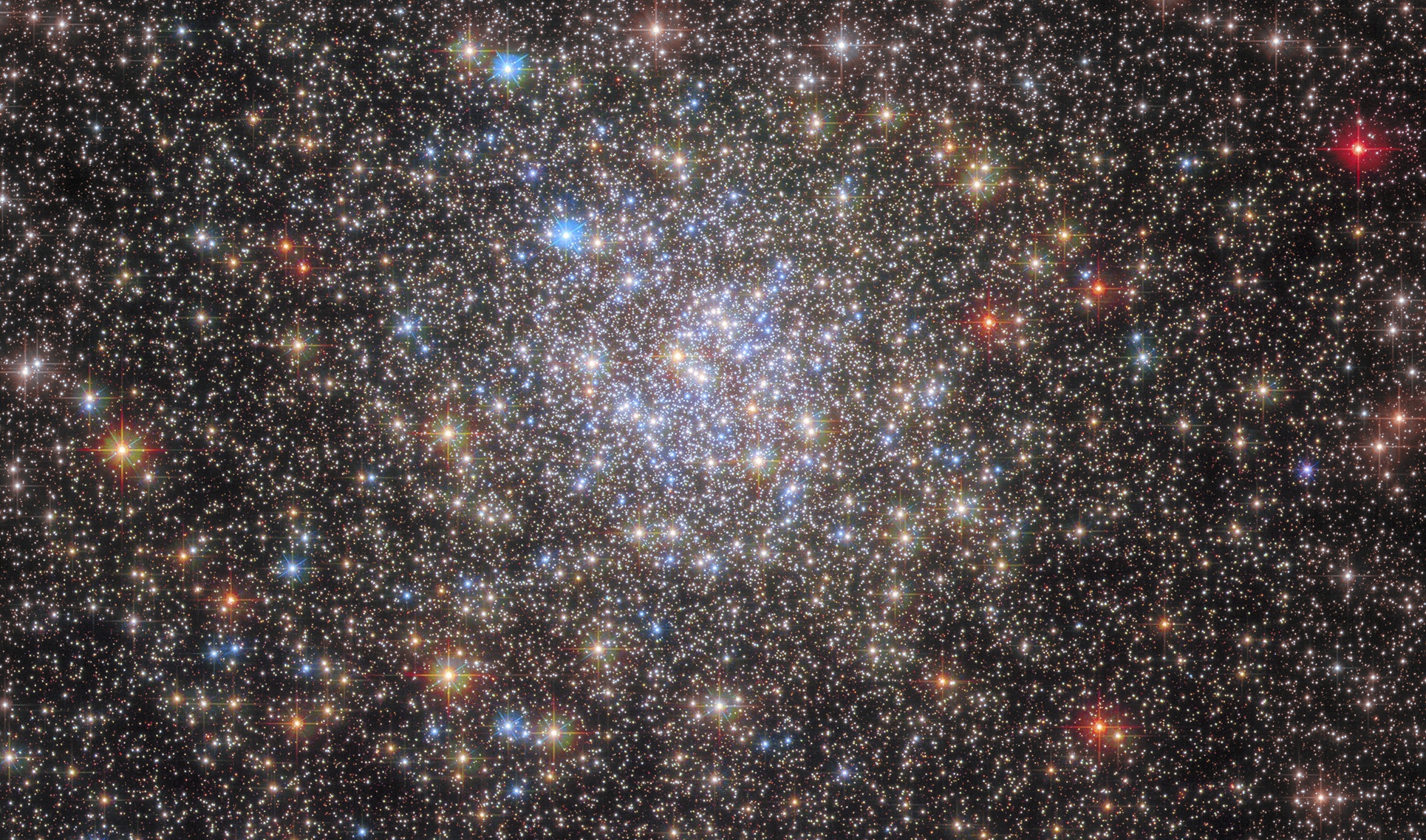
The Venerable Hubble Space Telescope has cemented its place in history. Some call it the most successful science experiment ever. And while the James Webb Space Telescope might vie for that title, the Hubble does things that even the powerful JWST can’t do.
Exhibit A: this stunning image of NGC 6355.
Continue reading “The JWST is the Shiny New Space Telescope, but the Dependable Hubble is Still Going Strong”
